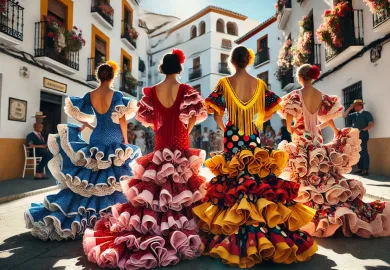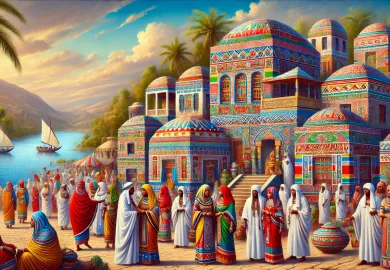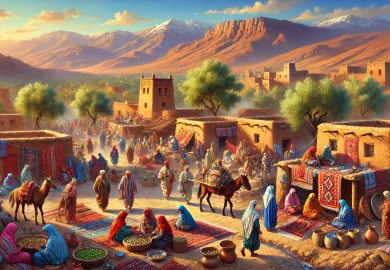
Bhutan, often called the “Land of the Thunder Dragon,” is a nation deeply rooted in tradition, culture, and spirituality. At the heart of its cultural identity is the Gho, the national dress for Bhutanese men. More than just a garment, the Gho represents the essence of Bhutanese heritage, social values, and pride. In this article, we will explore the historical background, craftsmanship, significance, and modern adaptations of the Gho. This rich attire is not only a symbol of Bhutan’s unique culture but also a reflection of the harmonious way of life of its people.
The Historical Origins of the Gho
The Gho’s origins date back to the 17th century, during the reign of Zhabdrung Ngawang Namgyal, who is credited with unifying Bhutan. He is said to have introduced the Gho to promote a sense of unity and national identity among the Bhutanese people. At the time, Bhutan was a collection of small, fragmented regions, and the introduction of a national dress was a way to create a shared cultural bond.
The Gho was originally worn by the nobility and members of the court. It symbolized status and authority, and its adoption across various classes helped foster a sense of equality and belonging. The garment itself has evolved in style and form over the centuries, but its core structure remains true to its historical origins.
Today, the Gho is worn by all Bhutanese men, regardless of social standing, and it plays a significant role in daily life, as well as during religious and cultural ceremonies. Its endurance through time demonstrates its importance as a living link to Bhutan’s rich past.
The Art of Crafting a Gho
Creating a Gho is an intricate and skilled process that reflects the craftsmanship and artistry of Bhutanese weavers. The Gho is made from various fabrics, ranging from cotton and wool for everyday use to luxurious silk for formal occasions. The fabric is woven in bold, vibrant patterns that are often inspired by nature, Bhutanese religious symbols, and local folklore. The most exquisite Gho are hand-woven, showcasing the immense patience and expertise of the weavers.
The Gho itself is a knee-length robe with long sleeves, tied at the waist with a belt known as the kera. It is worn over a white shirt called tego and sometimes paired with a jacket called kabney for special occasions. The way a Gho is worn, with the extra fabric tucked and folded at the waist to form a pouch, is a distinctive feature that sets it apart from other traditional garments in the region.
The pouch, or thog as it is known, is not just an aesthetic feature but also a practical one. Traditionally, it was used to carry essential items like a bowl or even religious texts, adding to the Gho’s functionality in everyday life. The creation of a Gho, from fabric selection to the final stitching, is an embodiment of Bhutanese values of patience, precision, and respect for tradition.
The Symbolism and Cultural Importance of the Gho
The Gho is much more than just an item of clothing—it carries deep cultural, social, and spiritual significance. Wearing the Gho is an expression of Bhutanese identity and pride. It connects the wearer to Bhutan’s history, religion, and monarchy. In fact, Bhutanese law mandates that the Gho, along with the kira (the traditional dress for women), be worn during formal occasions, government functions, and visits to religious sites.
In terms of symbolism, the Gho represents modesty and respect. The flowing robe covers the body in a way that is both dignified and elegant, reflecting Bhutan’s Buddhist values of humility and simplicity. It is common to see Bhutanese men wearing the Gho in their daily lives, whether they are working in government offices, attending school, or participating in community events. The garment fosters a sense of community and shared identity.
The different fabrics and patterns used in Gho also carry symbolic meaning. Silk Gho are often reserved for high-ranking officials and special occasions, while the use of specific colors can indicate status, religious significance, or adherence to certain traditions. The Gho, as such, plays a role in Bhutanese social structures while simultaneously reinforcing values of equality and cultural cohesion.
The Modern Gho: Adaptations and Challenges
While the Gho remains a vital part of Bhutanese life, it has not been untouched by modernization. In recent years, there have been adaptations in the way the Gho is worn and perceived, especially among the younger generation. The introduction of synthetic fabrics, faster weaving techniques, and modern tailoring methods has made the Gho more accessible and affordable. However, this has also raised concerns about the loss of traditional weaving techniques and the dilution of cultural heritage.
In urban areas, the Gho is still worn daily, but younger men sometimes opt for a more casual, relaxed version of the traditional attire. Some even accessorize the Gho with modern elements like Western-style shoes or watches, blending the old with the new. These adaptations reflect the dynamic nature of culture and fashion, as Bhutanese men find ways to express individuality while still honoring tradition.
However, preserving the essence of the traditional Gho in the face of modernization is a challenge that Bhutanese society takes seriously. Schools and government institutions continue to enforce the wearing of the Gho, especially during formal events. Efforts to revive and promote traditional weaving techniques are underway, ensuring that the artistry behind the Gho remains vibrant and relevant.
The modern Gho is a testament to Bhutan’s ability to balance tradition with modernity. As Bhutan continues to navigate the pressures of globalization, the Gho stands as a symbol of resilience, adaptability, and cultural pride.
Conclusion: The Gho as a Symbol of Bhutanese Identity
In Bhutan, the Gho is not merely a garment but a reflection of the country’s values, history, and identity. It is a symbol of unity, modesty, and cultural pride that transcends generations. Despite the challenges of modernization, the Gho remains a vital part of Bhutanese life, worn with pride and reverence in both formal and everyday settings.
The enduring legacy of the Gho highlights Bhutan’s commitment to preserving its rich cultural heritage while embracing the changes brought by the modern world. Whether worn in the bustling capital of Thimphu or in the remote villages of the Himalayas, the Gho serves as a constant reminder of the deep-rooted traditions that define Bhutan and its people.








